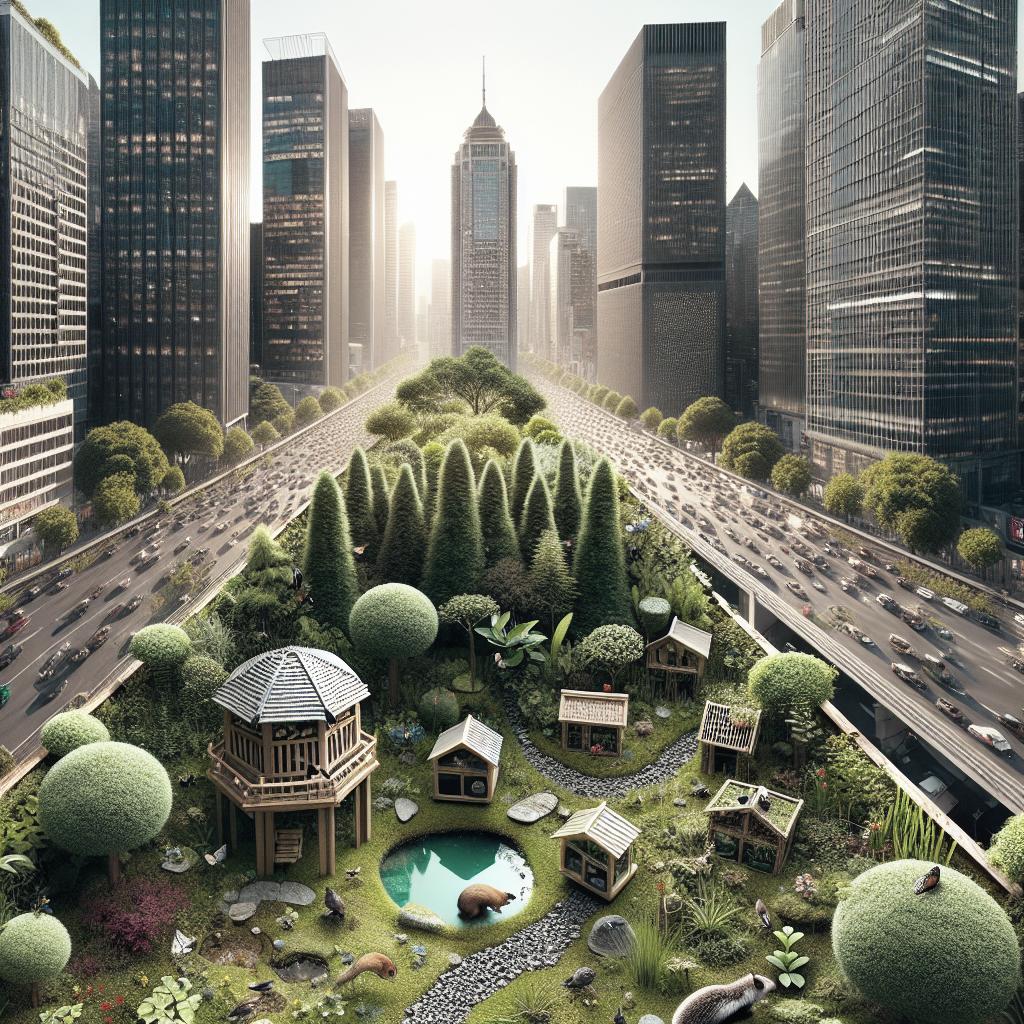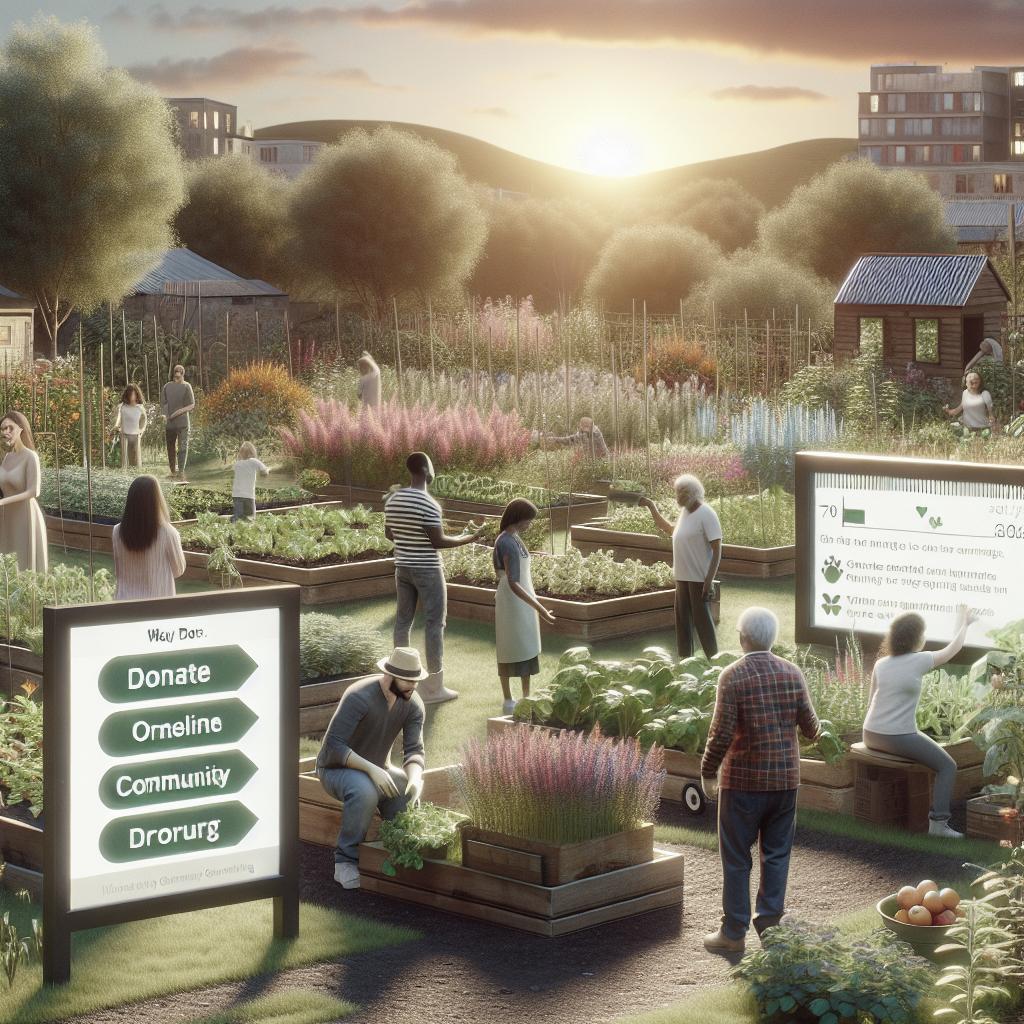Urban gardens are slowly disappearing, leading to several adverse effects on local wildlife and ecosystem health. This blog post discusses the alarming trend of vanishing gardens, examines the detrimental consequences of fewer green spaces, highlights the numerous benefits of urban gardens, and offers practical tips on making gardens more wildlife-friendly. Additionally, it explores whether new housing developments can integrate features conducive to supporting wildlife. By transforming our urban spaces, we can revive local biodiversity and create thriving habitats even in the heart of our cities.
Where are gardens disappearing?
Over the past few decades, urban sprawl, increasing population density, and the surge in housing development have led to the systematic reduction of private and communal gardens. Residential areas are increasingly dominated by concrete structures with minimal green space, as developers prioritize maximizing usable area for buildings over preserving or creating gardens. Front yards are often paved to accommodate additional parking, while backyards are replaced with patios and extensions, further contributing to the disappearance of natural habitats.
This trend is not restricted to large urban centers but is evident in suburbs as well. Factors such as reduced garden maintenance due to busy lifestyles, a preference for low-maintenance artificial lawns, and a limited understanding of the importance of flora for local fauna have exacerbated the situation. As these green spaces vanish, the opportunity for urban wildlife to find food, shelter, and breeding grounds diminishes significantly.
What is the effect of fewer gardens?
The decline of urban gardens has severe implications for local wildlife. Birds, insects, and small mammals rely heavily on these green spaces for survival. Gardens provide essential resources like nectar, seeds, berries, and habitats, enabling these creatures to thrive in an urban environment. Without these, there is a noticeable drop in biodiversity, causing certain species to become rare or even extinct in urban areas.
Additionally, gardens contribute to the broader ecological health of a city. They play a role in improving air quality, reducing urban heat islands, and managing stormwater runoff. The loss of vegetation can lead to diminished air quality and increased temperatures in city environments, exacerbating climate change issues and affecting human health. Furthermore, a lack of green spaces can impact community wellbeing, reducing opportunities for residents to engage with nature and enjoy its psychological benefits.
What are the benefits of gardens?
Urban gardens are not just aesthetic additions; they hold significant ecological and social value. Firstly, they act as vital refuges for wildlife, providing food, shelter, and breeding grounds. Birds, bees, butterflies, and even small mammals can thrive in urban gardens, contributing to maintaining biodiversity within cities. By planting native species, gardeners can further support local ecosystems and enhance habitat connectivity.
Gardens also play an essential role in improving environmental quality. They help absorb carbon dioxide, reduce noise pollution, and mitigate the urban heat island effect. The presence of green spaces in cities enhances mental health and well-being by offering residents a place to relax, unwind, and connect with nature. Furthermore, community gardens foster social cohesion, bringing people together with a common goal, cultivating a sense of belonging, and encouraging outdoor activities.
How to make a garden more wildlife friendly?
Transforming a garden to support wildlife involves a few deliberate and strategic practices. Firstly, selecting a variety of native plants that offer nectar, seeds, and fruits will attract different types of wildlife. Incorporating layers of vegetation – ground cover, shrubs, and trees – creates diverse habitats. Avoiding pesticides and herbicides is crucial, as these chemicals can harm insects and the birds that feed on them. Mulching and composting enrich the soil, promoting a healthy ecosystem for plants and the tiny organisms that thrive in it.
Water sources such as bird baths, small ponds, and even puddles can attract a variety of wildlife to the garden. Consider creating natural features like log piles, rock gardens, and hedge boundaries to offer shelter and nesting sites. Providing bird feeders, bat boxes, or insect hotels can create additional safe spaces for wildlife to thrive. Integrating these elements takes time, but the reward is a vibrant, living garden buzzing with life, contributing to urban biodiversity.
Can new housing be wildlife-friendly?
Yes, new housing developments can be wildlife-friendly with thoughtful planning and design. Developers can incorporate green roofs and living walls, which provide habitats for birds, insects, and small animals while insulating buildings. Landscaping with native plants, creating communal garden spaces, and preserving existing trees and green areas can integrate natural elements within new housing projects. Sustainable drainage systems, such as rain gardens and permeable pavements, can manage stormwater while benefiting local flora and fauna.
Additionally, housing policies can encourage wildlife-friendly practices. By mandating green space ratios in development plans and offering incentives for environmentally sustainable designs, municipalities can foster urban biodiversity. Engaging with local communities and wildlife experts can ensure that the needs of both residents and wildlife are met, creating harmonious spaces where humans and nature coexist. Future housing can offer a blueprint for cities that both support growing populations and sustain local ecosystems.
Next steps
| Topic | Key Points |
|---|---|
| Where are gardens disappearing? | Urbanization, population density, housing developments, preference for low-maintenance landscapes. |
| What is the effect of fewer gardens? | Decline in urban wildlife, reduced biodiversity, worsened air quality, increased urban heat. |
| What are the benefits of gardens? | Supports wildlife, improves environmental quality, enhances mental health, fosters social cohesion. |
| How to make a garden more wildlife friendly? | Plant native species, avoid pesticides, provide water sources, create shelters like log piles and bird feeders. |
| Can new housing be wildlife-friendly? | Green roofs, native landscaping, sustainable drainage, housing policies supporting green spaces. |


